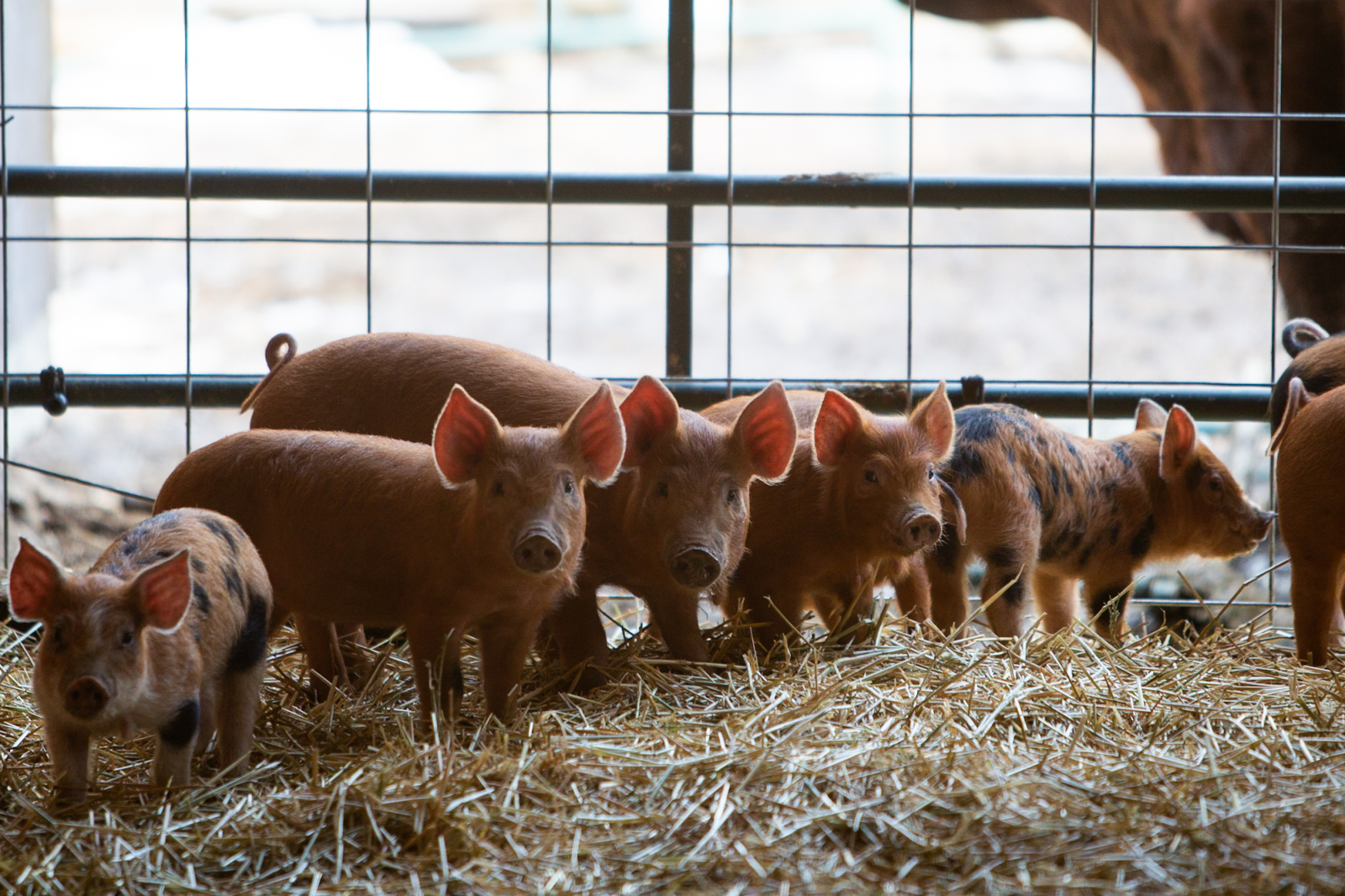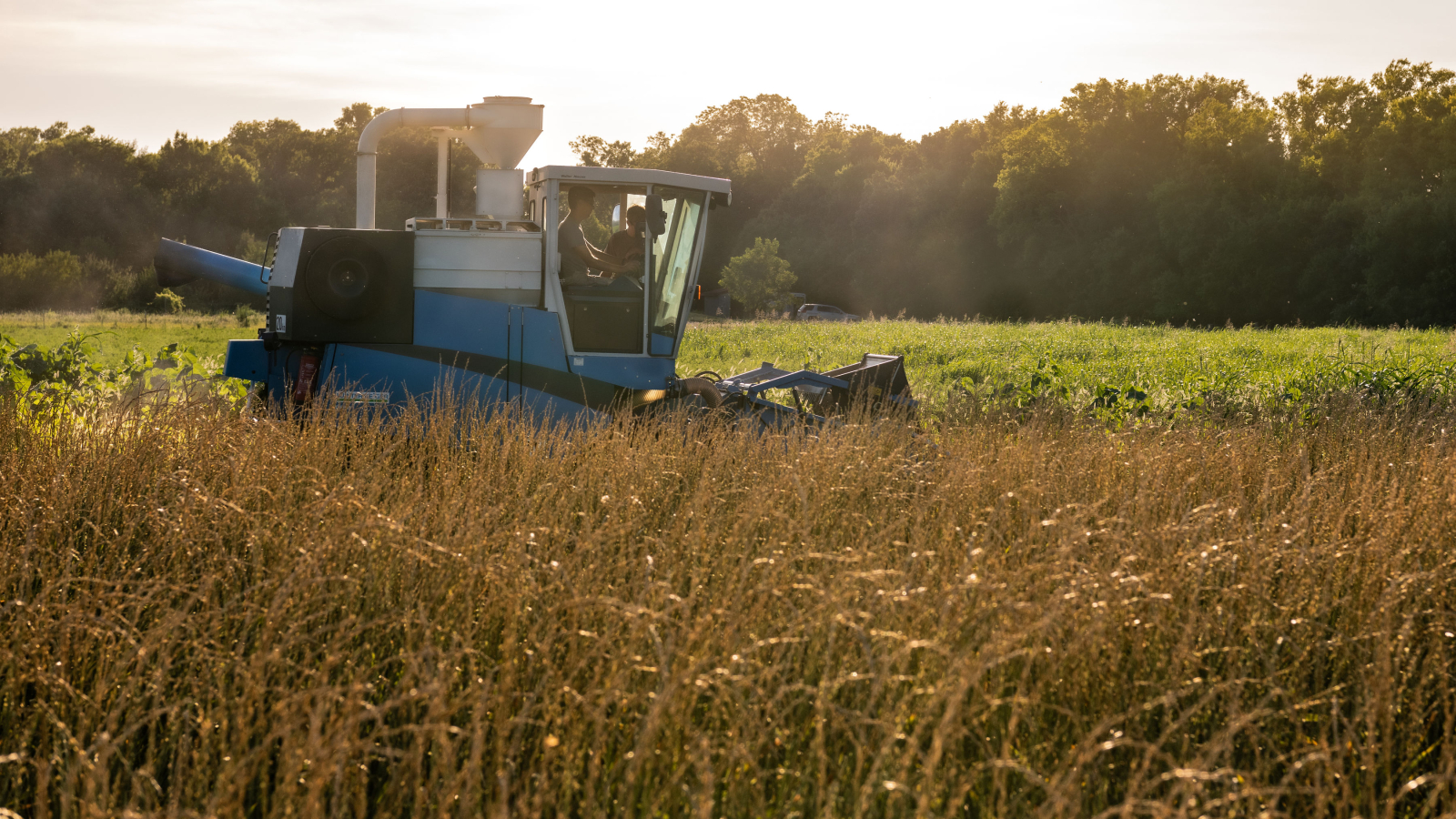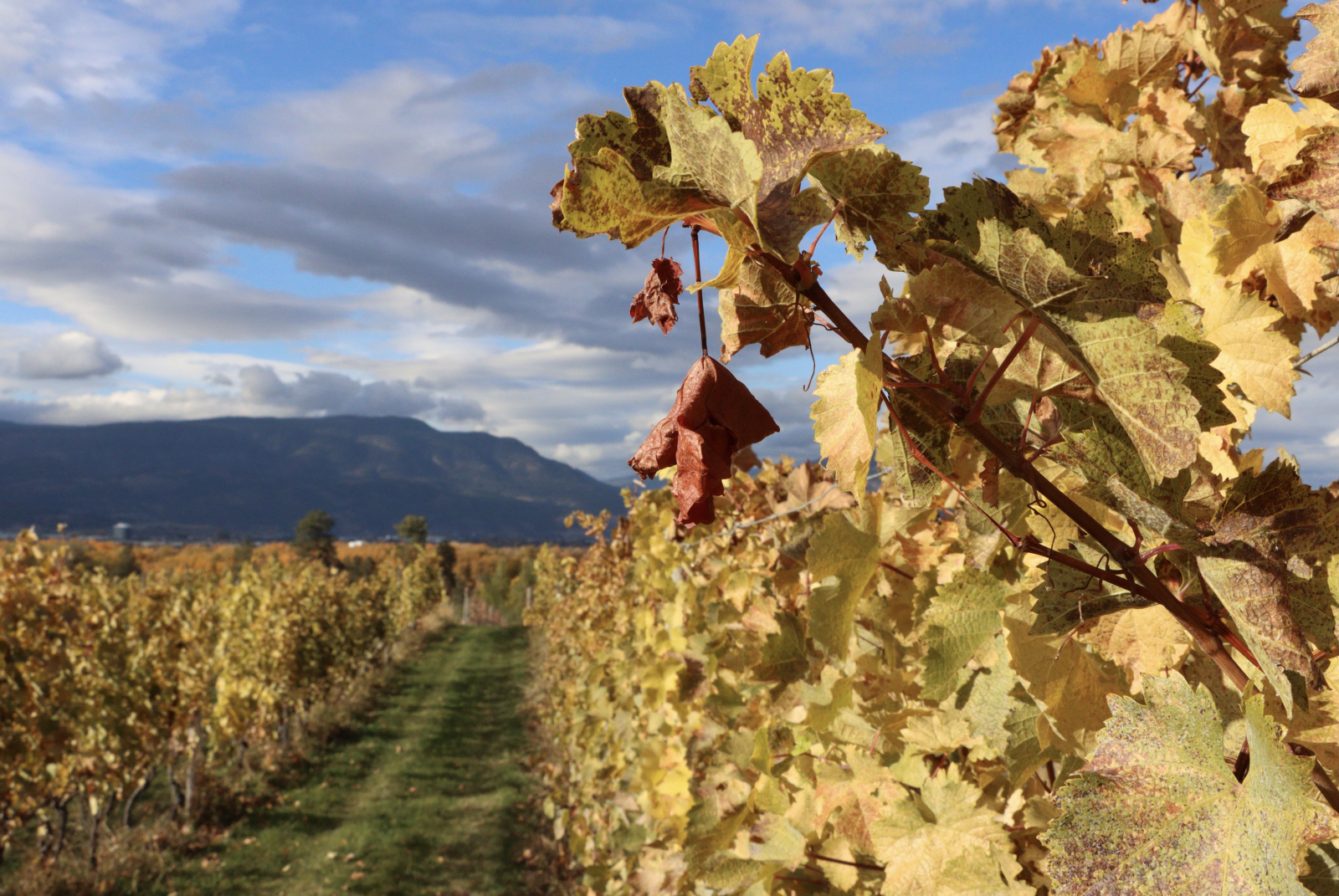Last summer, the world's largest french fry producer, McCain Foods, made Canadian headlines when it promised to convert its entire supply chain to regenerative agriculture, an approach to agriculture that promises to sequester carbon and boost biodiversity.
The New Brunswick potato giant is not alone. Over the past decade, the approach has been promoted by a hodgepodge of both small- and large-scale farmers, environmental and social justice advocates, agribusiness CEOs, tech bros, journalists, and academics. It's even received federal support, with Canada's 2030 emissions reduction plan pledging roughly $1 billion to help farmers adopt regenerative methods.
The problem? No one agrees on what regenerative agriculture actually means.
Get top stories in your inbox.Our award-winning journalists bring you the news that impacts you, Canada, and the world. Don't miss out.
Email * Heritage breed piglets play inside a barn at Spray Creek Ranch, a regenerative ranch near Lillooet, B.C. Photo by Jesse Winter/National Observer
Heritage breed piglets play inside a barn at Spray Creek Ranch, a regenerative ranch near Lillooet, B.C. Photo by Jesse Winter/National ObserverOver the coming weeks, a five-part series by Canada's National Observer will explore the cast of characters putting the approach into practice in Canada. It will look back on a couple who farmed regeneratively before it was cool and try to figure out if beef can ever be sustainable. A techie's search for the regenerative holy grail is also on the menu, alongside the quest to grow a grain that never dies.
But first
What is regenerative agriculture? What people are reading UN leader slams 'dangerous radicals' increasing oil and gas production amid climate crisis following latest IPCC report By Natasha Bulowski | News, Politics, Ottawa Insider | April 5th 2022
UN leader slams 'dangerous radicals' increasing oil and gas production amid climate crisis following latest IPCC report By Natasha Bulowski | News, Politics, Ottawa Insider | April 5th 2022 Regenerative agriculture (or regenerative farming) is an approach to agriculture aimed at boosting soil health. Because healthy soils are carbon sinks, the approach is often promoted as a solution to climate change, though most scientists warn that healthier soils alone won't end the crisis if we don't also reduce greenhouse gas emissions. The approach uses a suite of techniques, like cover crops and rotational grazing, to build soil carbon and reduce or eliminate the need for harmful practices like synthetic fertilizers or feedlots to grow crops or livestock.
Healthy soils are complex ecosystems home to millions of different bacteria, fungi, plants, insects and other organisms. At their heart lies soil carbon, which is carbon once contained in organic matter like decayed leaves or manure that has been incorporated into the soil. Soil carbon has multiple benefits, like feeding soil ecosystems, helping retain nutrients and reducing erosion.
Agrichemicals like pesticides and fertilizers disrupt these soil ecosystems, reducing the amount of carbon they absorb. They also lead to a harmful buildup of nutrients like nitrogen that can leach into waterways or be transformed by microbes into nitrous oxide, a powerful greenhouse gas. Too much tillage can also harm soils by converting soil carbon into carbon dioxide. Regenerative agriculture aims to eliminate these harmful impacts and practices.
The past decade has seen exploding interest in an approach to farming focused on soil health called regenerative agriculture proponents say can help fix the climate crisis. The problem? No one agrees on what regenerative agriculture actually means. Researcher Shuwen Wang examines grains of perennial wheat in a greenhouse at the Kansas-based Land Institute, a research centre dedicated to breeding perennial crops without genetic engineering. Perennials are much better at regenerating soil health than annuals and successful perennial crops could drastically reduce the environmental impact of our food. Photo by the Land Institute How can it help fight climate change?
Researcher Shuwen Wang examines grains of perennial wheat in a greenhouse at the Kansas-based Land Institute, a research centre dedicated to breeding perennial crops without genetic engineering. Perennials are much better at regenerating soil health than annuals and successful perennial crops could drastically reduce the environmental impact of our food. Photo by the Land Institute How can it help fight climate change? Over half the land on the planet covered in vegetation is used for agriculture, and the Intergovernmental Panel on Climate Change estimates these fields, orchards and pastures are responsible for roughly a quarter of the world's greenhouse gas emissions. Industrial farming practices and the conversion of natural carbon sinks like forests and prairies into farmland are the main drivers of these emissions.
Regenerative farming promises to reverse this flow of greenhouse gases by putting carbon back into the ground, turning agricultural landscapes into carbon sinks. Regenerative practices aim to mimic natural ecosystems which are natural carbon sinks theoretically letting farmers and ranchers store lots of carbon on their land.
The approach typically depends on livestock or poultry, which provide manure that can feed the soil with nutrients and carbon. This has emboldened some of the world's biggest meat companies to become ardent proponents of the approach, raising suspicions among researchers and activists that they are using the term regenerative agriculture to greenwash their business, even when it is clear people, especially in wealthy countries, need to eat less meat.
 Chickens flock around Lillooet, B.C. rancher Tristan Banwell in their winter pen in February. Come spring, he will transfer the fowl to a mobile enclosure that lets him move them around his pastures and fertilize them as needed. Photo by Jesse Winter/National Observer Who is fighting for it?
Chickens flock around Lillooet, B.C. rancher Tristan Banwell in their winter pen in February. Come spring, he will transfer the fowl to a mobile enclosure that lets him move them around his pastures and fertilize them as needed. Photo by Jesse Winter/National Observer Who is fighting for it?Indigenous people and peasant farmers have used regenerative techniques for generations, and civil society organizations like La Via Campesina have for years called for the approach to be more widely adopted. Organic farming is also based on promoting soil health and many organic farmers use similar techniques. The term "regenerative agriculture" is largely attributed to the Rodale Institute, a U.S. organic farming research centre.
There is a broad consensus among these groups that regenerative farming only describes the physical farm-level aspects of a sustainable food system. Agroecology, a broader term that describes both regenerative techniques and a host of sustainable social and economic policies and initiatives, is their preferred term to describe a sustainable food system. Agroecology is an approach to farming and food that prioritizes sustainable practices, social justice and communities' food sovereignty. It has been endorsed by the UN's Food and Agriculture Organization.
However, the past decade has seen a more varied group of people and organizations advocate for the approach, especially in North America. Big agribusinesses like General Mills and McCain Foods have pledged to transition parts of their supply chains to regenerative practices, while the 2020 Netflix documentary Kiss the Ground boosted regenerative farming into the mainstream. Agtech and carbon trading companies are also eyeing the approach.
 Karn Manhas, CEO of Canadian agtech company Terramera, talks with Tom Hall, a robotics engineer, in a high-tech growth chamber in Vancouver, B.C. The company is trying to create a system that could easily measure how much carbon is sequestered in farmers' fields in an effort to make regenerative agriculture more common. Photo by Jimmy Jeong/National Observer
Karn Manhas, CEO of Canadian agtech company Terramera, talks with Tom Hall, a robotics engineer, in a high-tech growth chamber in Vancouver, B.C. The company is trying to create a system that could easily measure how much carbon is sequestered in farmers' fields in an effort to make regenerative agriculture more common. Photo by Jimmy Jeong/National Observer In Canada, several companies and non-profit organizations are pushing federal and provincial governments to help farmers implement more regenerative practices. For instance, Farmers for Climate Solutions, a farmer-led advocacy group, last year convinced the federal government to include about $270 million for regenerative practices in the 2021 budget. In B.C., the provincial government has created a body in its Ministry of Agriculture to support regenerative farming.
The hype about regenerative farming has some sustainable food and climate researchers and advocates concerned. Unlike organic farming, which is regulated under strict rules, or even agroecology with its UN endorsement, regenerative farming has no certification or regulatory requirements. Anyone can market themselves as a regenerative farmer or regenerative food company flexibility that leaves the term ripe for greenwashing.
Critics also emphasize that the approach doesn't typically tackle social or economic inequities in the food system. They warn that omission opens the door to a host of social and economic issues, from low wages for farm and processing plant workers to big agribusinesses merging to consolidate their power over farmers and consumers.
 A combine harvests a crop of Kernza in July 2020. The grain perennial crop developed by the Land Institute to be grown commercially. Photo by the Land Institute What's in it for farmers?
A combine harvests a crop of Kernza in July 2020. The grain perennial crop developed by the Land Institute to be grown commercially. Photo by the Land Institute What's in it for farmers?Regenerative farming can be a boon for farmers, potentially reducing their costs and making them more resilient in the face of extreme weather events like floods or droughts. Because the approach helps build on-farm biodiversity, it can also improve natural pollination and reduce pests while cutting farmers exposure to toxic pesticides and fertilizers.
Unfortunately, for most farmers transitioning to regenerative farming isn't cheap. Their yields typically decrease, especially during the first few years of the transition, and without a certification scheme like organic, it is tricky to sell the harvest at a premium price to cover the extra costs. Regenerative agriculture can potentially require more labour, again increasing costs. For many farms, that burden is too big to overcome without extra financial support. With the bulk of Canada's farm subsidies geared to helping farmers maximize their yields for Canada's $56-billion annual agri-food export market, farmers have few options to fund a transition to more sustainable practices.
 Regenerative techniques, like leaving grasses and weeds between rows of vines helped Sperling Vineyards, in Kelowna, B.C. weather extreme heat and drought last summer, head winemaker and owner Ann Sperling explained during an October visit. Photo by Marc Fawcett-Atkinson/National Observer
Regenerative techniques, like leaving grasses and weeds between rows of vines helped Sperling Vineyards, in Kelowna, B.C. weather extreme heat and drought last summer, head winemaker and owner Ann Sperling explained during an October visit. Photo by Marc Fawcett-Atkinson/National Observer Sounds great! Where can I buy regenerative food?
The easiest way is to go to a local farmers market and ask vendors if they farm with regenerative techniques. Some farms and food companies also advertise their goods as regenerative, and a list compiled by the national organization Regeneration Canada shows dozens of regenerative farms across the country. Outdoor gear retailer Patagonia also uses regeneratively grown ingredients in its selection of camping food.
Finding regenerative products in supermarkets is more challenging, in part because of the lack of a certification scheme. Meat or dairy that is fully pasture-raised will typically have been grown using some regenerative approaches. And while they're not necessarily regenerative, pulses like lentils or chickpeas fix nitrogen, are good for soil (and human) health, and are a low-carbon source of protein. Anything sold under organic certification will also often have been grown using some regenerative techniques.





